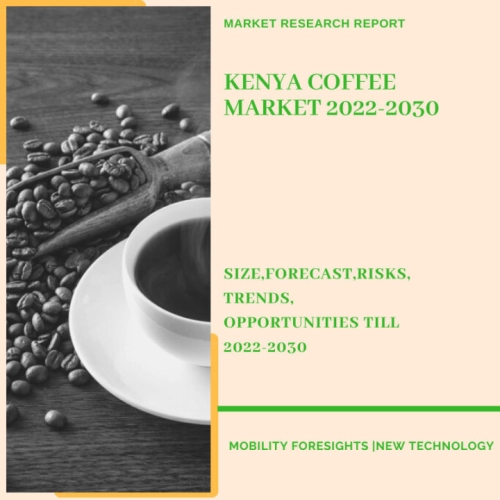
- Get in Touch with Us

Last Updated: Apr 26, 2025 | Study Period: 2022-2030
Coffee is a popular beverage that is proven to improve focus and give you more energy. Many people depend on their daily cup of coffee when they awake in order to get their day off to a good start.

Making coffee is even more justified given that it has been linked to a wide range of potential health benefits in addition to its energising effects.
Coffee contains caffeine, a stimulant of the central nervous system, which is known to lessen drowsiness and increase vigour.
This is due to the fact that coffee increases levels of other neurotransmitters in the brain that regulate human energy levels, such as dopamine, by blocking the receptors of adenosine.
Coffee is a beverage made from the roasted and ground seeds of tropical, evergreen coffee plants with African origins. Along with water and tea, coffee is one of the three most common beverages consumed globally.
It is also one of the most lucrative commodities on the market. Numerous beverages use coffee as their foundation, but caffeine, an alkaloid found in coffee, is primarily responsible for its energising effects.
The Kenya Coffee Market accounted for $XX Billion in 2021 and is anticipated to reach $XX Billion by 2030, registering a CAGR of XX% from 2022 to 2030.
Kenya's cooperative systems for coffee production, processing, milling, marketing, and auctioning are well-known. Small-scale farmers generate a large percentage of Kenyan coffee.
The number of coffee farmers in Kenya was estimated to be large , the coffee business supported the jobs of Kenyans either directly or indirectly.
The high plateaus surrounding Mount Kenya, the Aberdare Range, Kisii, Nyanza, Bungoma, Nakuru, and Kericho, as well as, on a smaller scale, the Machakos and Taita hills in the Eastern and coast provinces, respectively, are the main coffee-growing regions in Kenya.
The consumption of several coffee varieties was lower in Kenya. This is because the majority of people do not have enough disposable income to regularly buy and drink expensive beverages like coffee.
This segment of the population prefers tea as their beverage of choice. Only a small percentage of the region's middle- and high-income residents, however, drink coffee.
Additionally, coffee shops may be found in malls, and the market has a big selection of imported goods to satisfy customers.
However, an increasing trend has been noticed in the hot drinks industry where coffee, especially instant coffee, is replacing tea usage.
| Sl no | Topic |
| 1 | Market Segmentation |
| 2 | Scope of the report |
| 3 | Abbreviations |
| 4 | Research Methodology |
| 5 | Executive Summary |
| 6 | Introduction |
| 7 | Insights from Industry stakeholders |
| 8 | Cost breakdown of Product by sub-components and average profit margin |
| 9 | Disruptive innovation in the Industry |
| 10 | Technology trends in the Industry |
| 11 | Consumer trends in the industry |
| 12 | Recent Production Milestones |
| 13 | Component Manufacturing in US, EU and China |
| 14 | COVID-19 impact on overall market |
| 15 | COVID-19 impact on Production of components |
| 16 | COVID-19 impact on Point of sale |
| 17 | Market Segmentation, Dynamics and Forecast by Geography, 2022-2030 |
| 18 | Market Segmentation, Dynamics and Forecast by Product Type, 2022-2030 |
| 19 | Market Segmentation, Dynamics and Forecast by Application, 2022-2030 |
| 20 | Market Segmentation, Dynamics and Forecast by End use, 2022-2030 |
| 21 | Product installation rate by OEM, 2022 |
| 22 | Incline/Decline in Average B-2-B selling price in past 5 years |
| 23 | Competition from substitute products |
| 24 | Gross margin and average profitability of suppliers |
| 25 | New product development in past 12 months |
| 26 | M&A in past 12 months |
| 27 | Growth strategy of leading players |
| 28 | Market share of vendors, 2022 |
| 29 | Company Profiles |
| 30 | Unmet needs and opportunity for new suppliers |
| 31 | Conclusion |
| 32 | Appendix |